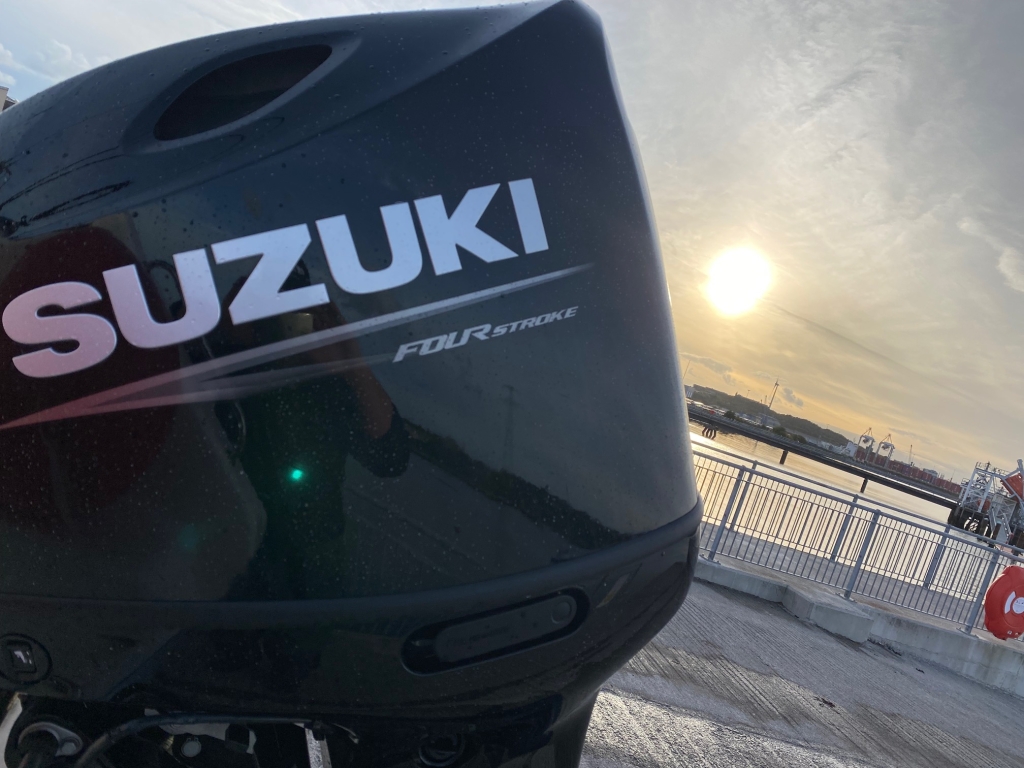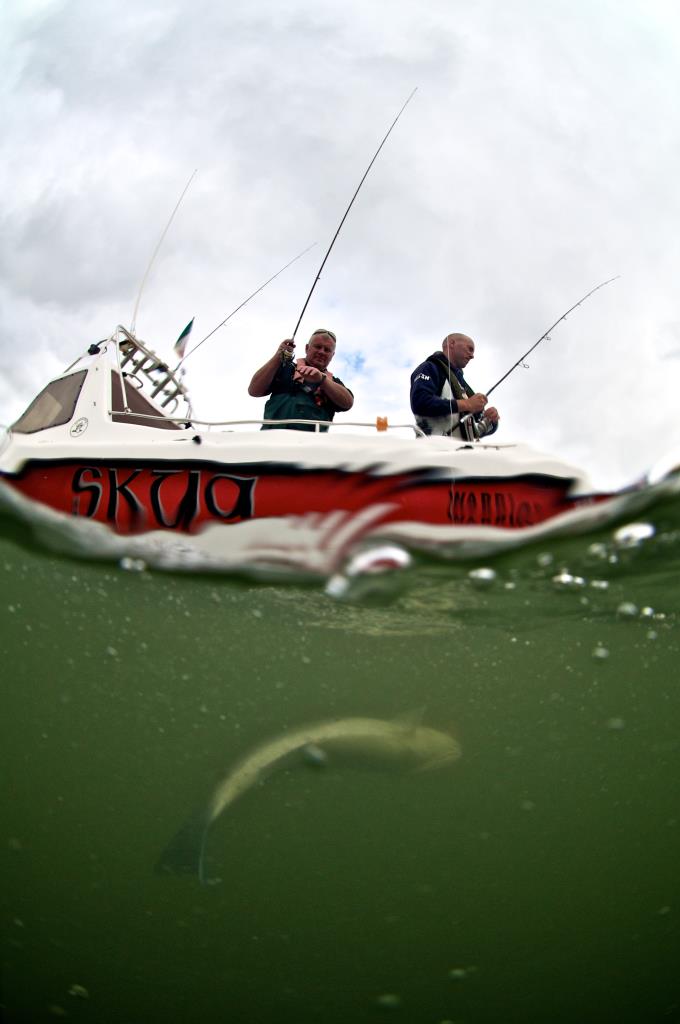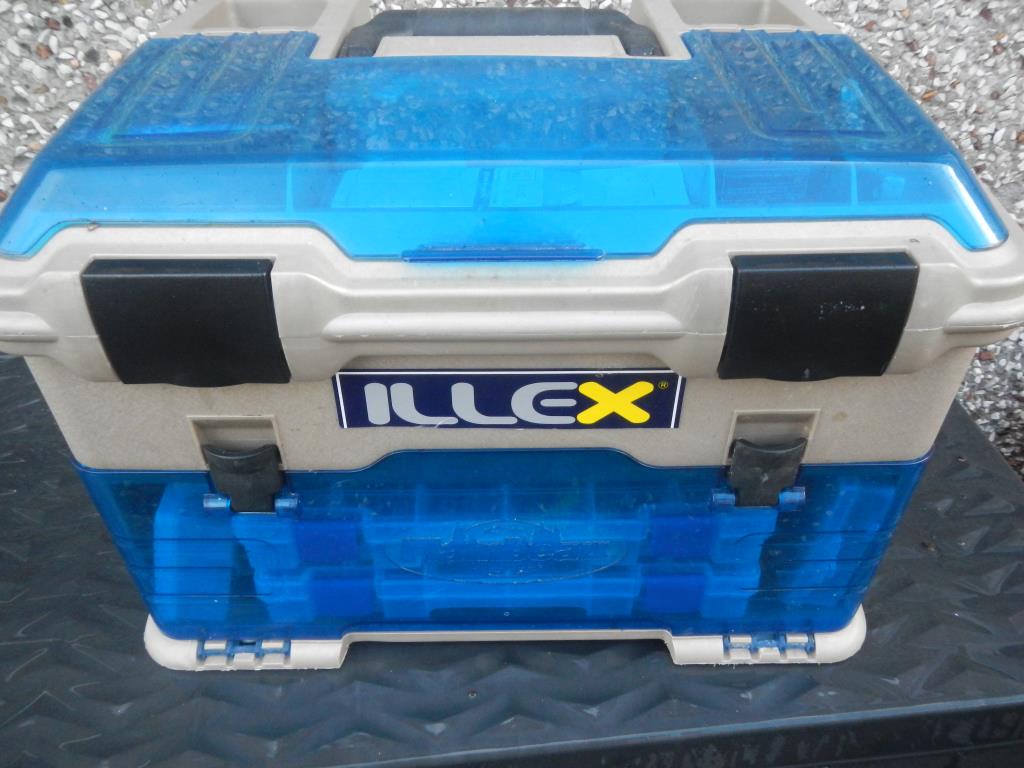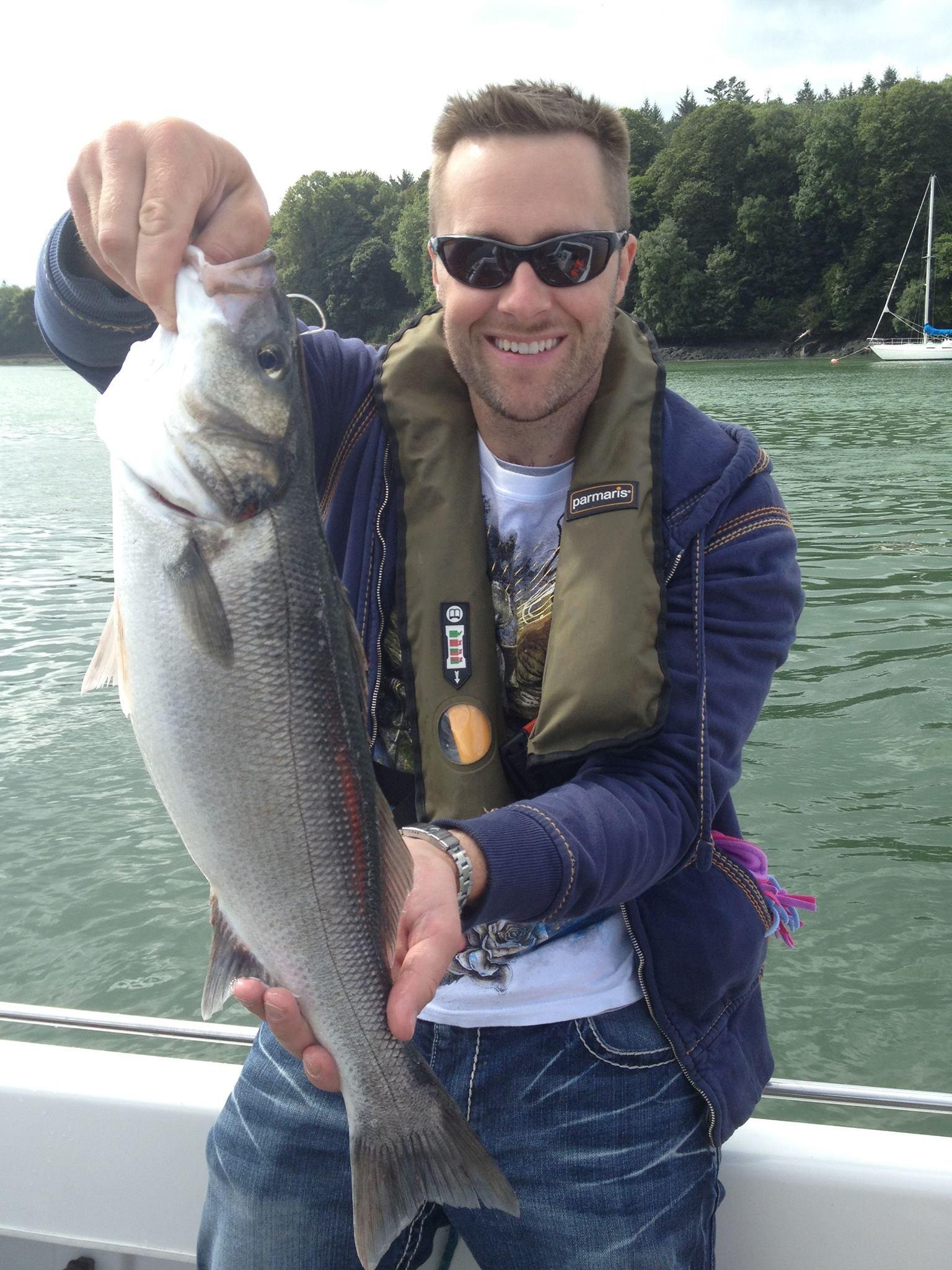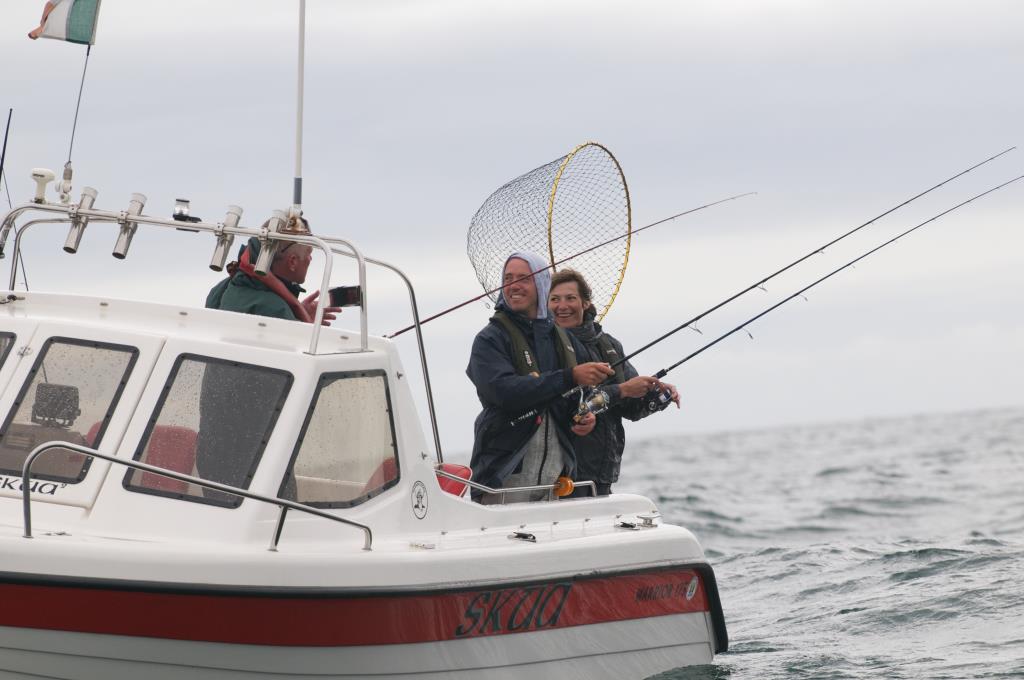* Re-Powering The Operation 2
So the choice of engine is made and the wait begins. You might find that there’s things to be considered before the fitting begins.

So, the decision to opt for a Suzuki was actually an easy one once I weighed up the different options. The fact that I was going for the digital option meant I had some remodelling to do to Skua.
Cork Marine (CM) were going to fit my engine. They are the oldest Suzuki Dealers in Cork and have a great reputation for doing quality work. I visited the workshop and chatted with Paul, the owner, and fairly bent his ear about what I wanted to do. I had seen a picture of a Warrior 175 that had a factory fitted 140BG that had the throttle control on the console rather than the usual position on the gunwale’ the 140BG has neither throttle nor gear cable. I decided this was for me. The Suzuki would be coming with a digital gauge and because I had two Smartcraft gauges with my Mariner I decided to get two Suzuki Digital gauges (SMG4) in order to have at least, if not more information available to me.

Wisely Cork Marine would not begin the fitting until all the ancillaries had arrived. Once they arrived, I received the call to deliver Skua to Cork Marine. I had removed all the electrical components of my old engine so they only had to removed my old motor.
There are some subtle touches to the Suzuki. All the cables and fuel lines are enclosed in trunking to make thing really tidy at the stern. In fairness to CM they are exceptionally tidy and are practically OCD in terms of having things fitted properly. Now to be fair I would expect all modern engines to have proper trunking but this as my first experience and I am impressed with the order.


CM wanted to replace my prefuel filter. I didn’t argue. Suzuki have their own prefuel system that does the same 10-micron filtering as my Parker. The Suzuki has a smaller filter unit and the filters are far cheaper to replace than the Parker/Racor. It makes sense to replace as my Racor needed a new filter and it also was beginning to show signs of corrosion. The Suzuki unit has a composite body (read plastic!) and therefore will not suffer from corrosion issues at any stage. CM fitted the filter in where the old filter was located, in a safe quiet corner of the 175. These filters assemblies will fit any outboard so an alternative worth considering if you are replacing a filter unit.

Were CM really excelled was the fitting of the throttle. I had done some modifying of the console so had to fit a blanking plate. The throttle assembly was then fitted to the new plate. In fairness to CM they are very knowledgeable and at all stages had great insight to what I was anting to achieve.
As well as the two gauges (Although the gauges are square screen, the back is circular so they fit seamlessly where my old gauges were.) there is the stop-start button to be fitted as well, remember, the digital unit has no traditional key. It’s a bit like your car. A separate “Dead-man” or kill-cord is fitted unobtrusively all neat and tidy. There is a considerable amount of gubbins to be fitted inside the console. Suzuki runs their gauges off a NMEA 200 network so there is a data module to be fitted under the console too.

I will digress a little to mention that the arrival of a NMEA 2000 network on SKUA has sent me down a rabbit hole of modern communications. The ability to add different electronics to the network and to share information across the network is amazing. The lads in Garmin support were a mine of information for a networking novice like me but with minutes I had the engine data being displayed on my Garmin Echomap screen and I had all the info I required to expand my network (more of a winter job I think). With two SMG4 Suzuki gauges fitted I really have no need to have engine data on my Garmin screen but I did feel it was necessary to do it to be able show the capabilities of both engine and Echomap.
I was some excited bunny when I go the call to collect the boat. I spent some valuable time in CM going through the systems of the Suzuki and of course learning about the Suzuki Security key fob system. This certainly is the way forward in terms of engine security. Lets face it engine immobilisers are an important facet of modern motoring. Instead of carrying a key you will now be carrying a key fob like your car. Already I can hear people shouting about taking the fob off the boat in error – The motor can be started by inputting a passcode into the digital gauge if the pooh hits the fan.


All told it was an incredibly good experience dealing with Cork Marine. I can see now why they can be tricky to get on the phone… They are very busy people.
It was a few days later that I got to make my first launch. I was keen to get launched and get the run-in process started knowing that the first few hours are crucial to the longevity of the engine. I was like a nervous kid pushing that stop-start button for the first time and hearing the big lump of a DF140BG cough into life.

The run-in
You would think from reading that the break-in is a long process. In reality once the first 3 or 4 hours are out of the was you can more-or-less drive as you would but don’t maintain WOT for any long period. The first thing to strike me was the silence. I find I am looking at the rev counter to see if the motor is turned on. That first few runs has me messing about with the motor and messing about with trim to see if there is any difference in handling and of course to see what the difference in performance will be. The throttle takes a bit of getting used to. The lever is so smooth and incredible responsive manoeuvring around slipways and marinas is a bit nervy.

Fast forward a couple of trips – First impressions
I have completed my break-in procedure, and the motor has been back to Cork Marine for the Suzuki mandated 20 hour first service. As, you would expect there were no issues to be addressed. CM did recalibrate the trim max and min as it was better to do this in the workshop rather with the gauges. Apart from oil and filters CM checked the water filter, “the microplastic collection device”, incredibly there was some “stuff” here to be analysed.
Looking back now those first few trips were almost stressful! Firstly, the throttle responsiveness takes getting used to. It slips in and out of gear so smoothly you’d hardly notice. The is no “grind”. The response from moving the throttle lever is instantaneous. “Normal motors” have their quirks – I always say every motor behaves different on throttle. The Suzuki motor kicks in as soon as the lever passes the Forward mark and power evenly applied up the range pf travel. It’s the same in reverse. Over time I have discovered that manoeuvring around slipways and marinas takes literally just putting the motor into gear. The combination of gear ratio and my 21 inch propeller means that the boat will creep around and be very responsive to steering. I don’t have to content with too much tide but the easy increase of power makes compensating for tide easy.
On the open water the motor really is a revelation. I always considered my Mariner to be a responsive engine. It was an ould slouch compared to the Suzuki! Ok we much be fair here too: The Suzuki has 40 more horsepower!

So what is the increase in power bringing to the party? Let’s discuss speed. The 100hp would drive the boat to 28knots with ease; anything else would be dependant on conditions. The 140 will allow the 175 to do 30 knots in any conditions and it will get up there incredibly quickly. I have taken SKUA up to 35 knots. At that speed I’m having to do a lot of trimming to keep the boat from porpoising. I don’t have trim tabs fitted. I’ve always described the Warrior 175 hull as a 30knot hull. I think the 140hp is driving the hull outside its comfort zone and it may take tabs or such like to get the most top end from the motor. I’d say if I wanted I could also step down to a 20” prop. I’d gain a couple of hundred revs and probably gain a couple of knots to speed. I have to wonder if I need or want to go to those lengths. Suzuki had recommended an alloy prop over a stainless. Suzuki only do a 20” in stainless. Choices, Choices! For the time being I think I am happy to leave things as they are. It’s rare that I want or need that level of speed.
Where the 140 is really excelling is in “normal operation” I am cruising at 25 knots at 4500 revs. 4100 revs will see me at 22 knots. I suppose between 20 and 25 is where I spend most of my time. At this speed the engine is incredibly quite. You would imagine that the 140hp would consume a lot more fuel? Not across the range. Of course at full tilt it will consume but on my normal running my instrumentation is showing me that I am using between 0.8L per nautical mile and 1.0L per NM. It all depends on the conditions and the revs. Either way the 140 is as good or better than my 100. Impressive!

My first couple of days on the water I was hearing some strange clattering and banging. I was looking back wondering what was loose at the stern. In actual fact the motor is that quiet at higher revs I was hearing water slapping off the hull that I had never heard before! The big gearbox and and big propellor give great thrust in reverse. I often give a shot of reverse when I m starting my drift. I find I don’t really have to rev the motor to stop forward motion. I just pop into reverse and the boat stops. I suppose you can gather I am very pleased with the motor and am delighted at the boost in overall performance from tick-over to full throttle.
You can see more details of the Suzuki DF140BG here: https://assets.suzukimarine.com/wp-content/uploads/2022/10/30172755/DF115140-Product-Info-JPG-ver.pdf

